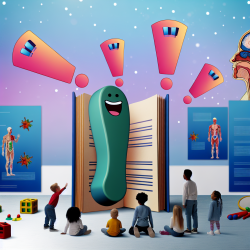Introduction
In the ever-evolving field of speech-language pathology, practitioners constantly seek innovative strategies to enhance therapeutic outcomes for children. One intriguing avenue of exploration is the interdisciplinary application of findings from astrobiology research, specifically insights from the study titled A Strategy for Origins of Life Research. While the origins of life may seem distant from speech-language pathology, the methodological rigor and interdisciplinary collaboration highlighted in this research can inspire new approaches in our field.
Understanding the Research
The research article, A Strategy for Origins of Life Research, emphasizes the importance of integrating diverse scientific perspectives to tackle complex questions. This strategy involves collaboration across various domains, including theory, practice, process, and future studies, to address the origins of life. Such a comprehensive approach can be translated into the realm of speech-language pathology, where interdisciplinary collaboration can significantly enhance therapeutic outcomes.
Application to Speech-Language Pathology
By adopting a similar interdisciplinary framework, speech-language pathologists can improve their practice in several ways:
- Theoretical Integration: Just as astrobiologists integrate theoretical frameworks to understand life's origins, speech-language pathologists can incorporate theories from cognitive science, psychology, and neurology to better understand language development and disorders.
- Practical Application: The research underscores the value of practical, data-driven investigations. In speech-language pathology, practitioners can employ data analytics to track progress and refine therapeutic strategies, ensuring interventions are evidence-based and tailored to individual needs.
- Process Optimization: Astrobiology research highlights the importance of process optimization through technological advancements. Similarly, speech-language pathologists can leverage technology, such as teletherapy platforms like TinyEYE, to enhance accessibility and effectiveness of interventions.
- Future Studies: The research advocates for future-oriented studies to explore uncharted territories. In speech-language pathology, this translates to exploring innovative therapies and interventions, such as incorporating virtual reality or AI-driven tools to engage children in novel ways.
Encouraging Further Research
Speech-language pathologists are encouraged to delve deeper into interdisciplinary research, drawing inspiration from fields like astrobiology. By fostering collaborations with experts in cognitive science, technology, and education, practitioners can develop holistic approaches that address the multifaceted nature of language disorders.
To read the original research paper, please follow this link: A Strategy for Origins of Life Research.










